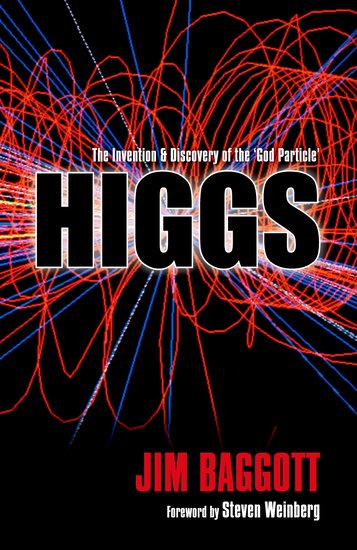We’re celebrating the release of Higgs: The Invention and Discovery of the ‘God Particle’ with a series of posts by science writer Jim Baggott over the week to explain some of the mysteries of the Higgs boson. Read the previous posts: “What is the Higgs boson?” and “Why is the Higgs boson called the ‘god particle’?”
By Jim Baggott
Experimental physicists are by nature very cautious people, often reluctant to speculate beyond the boundaries defined by the evidence at hand.
Although the Higgs mechanism is responsible for the acquisition of mass, the theory does not give a precise prediction for the mass of the Higgs boson itself. The search for the Higgs boson, both at Fermilab’s Tevatron collider and CERN’s Large Hadron Collider (LHC), has therefore involved elaborate calculations of all the different ways a Higgs boson might be created in high-energy particle collisions, and all the different ways it may decay into other elementary particles.
At CERN, the attentions of physicists working in the two main detector collaborations, ATLAS and CMS, have been drawn to Higgs decay pathways involving the production of two photons (which we write as H → γγ), a pathway leading to two Z bosons and thence four leptons (particles such as electrons and positrons, written H → ZZ → ι+ι–ι+ι–) and a pathway leading to two W particles and thence to two leptons and two neutrinos (H → W+W– → ι+υ ι–υ).
Finding the Higgs boson is then a matter of looking for its decay products — in this case the photons and leptons that result — at all the different masses that the Higgs may in theory possess. Just to make life more difficult, at the particle collision energies available at the LHC, there are lots of other processes that can produce photons and leptons, and this background must be calculated and subtracted from the observed decay events. Any events above background that produce two photons, four leptons or two leptons (and ‘missing’ energy, as neutrinos cannot be detected) then contribute to the evidence for the Higgs boson.
What the CERN scientists announced on 4 July was a statistically significant excess of decay events consistent with a Higgs boson with a mass between 125-126 billion electron volts, about 134 times the mass of a proton. This is definitely a new boson, one that decays very much like a Higgs boson is expected to decay. But, until the scientists can gather more data on its physical properties, they can’t say for sure precisely what kind of boson it is.
It’s also important to note that although the Higgs boson is predicted by the standard model of particle physics, there are theories that also predict the existence of a Higgs boson (actually, they predict many Higgs bosons). Until the scientists gather more data, they can’t be sure the new particle is precisely the particle predicted by the standard model.
We just need to be patient and stay tuned.
Jim Baggott is author of Higgs: The Invention and Discovery of the ‘God Particle’ and a freelance science writer. He was a lecturer in chemistry at the University of Reading but left to pursue a business career, where he first worked with Shell International Petroleum Company and then as an independent business consultant and trainer. His many books include Atomic: The First War of Physics (Icon, 2009), Beyond Measure: Modern Physics, Philosophy and the Meaning of Quantum Theory (OUP, 2003), A Beginner’s Guide to Reality (Penguin, 2005), and A Quantum Story: A History in 40 Moments (OUP, 2010). Read his previous blog posts.
On 4 July 2012, scientists at CERN’s Large Hadron Collider (LHC) facility in Geneva announced the discovery of a new elementary particle they believe is consistent with the long-sought Higgs boson, or ‘god particle’. Our understanding of the fundamental nature of matter — everything in our visible universe and everything we are — is about to take a giant leap forward. So, what is the Higgs boson and why is it so important? What role does it play in the structure of material substance? We’re celebrating the release of Higgs: The Invention and Discovery of the ‘God Particle’ with a series of posts by science writer Jim Baggott over the week to explain some of the mysteries of the Higgs. Read the previous posts: “What is the Higgs boson?” and “Why is the Higgs boson called the ‘god particle’?”
Subscribe to the OUPblog via email or RSS.
Subscribe to only physics and chemistry articles on the OUPblog via email or RSS.
View more about this book on the ![]()
![]()


Until it is spin-zero you dont know if it is Higgs. Should be no Nobel this year for Physics as they wait for results.
[…] Large Hadron Collider declared that they had discovered a new particle ‘consistent’ with the Higgs boson, with a mass around 133 times that of a proton. Peter Higgs, then aged 83, was sitting in the […]